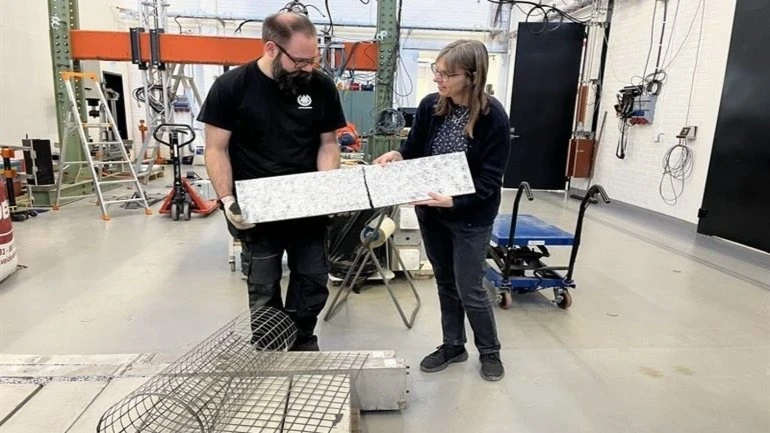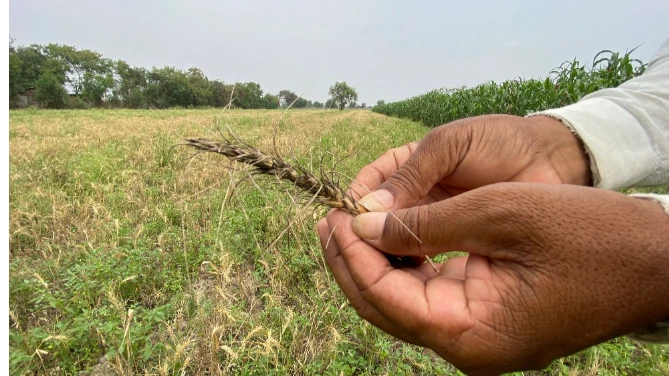‘New method for sustainable textile-reinforced concrete structures unveiled’

IN a groundbreaking move aimed at transforming the construction industry, innovative researchers at Chalmers University of Technology in Sweden, have recently unveiled a pioneering method for creating environmentally sustainable textile-reinforced concrete structures.
As global cement production exceeds 4.5 billion tonnes annually, accounting for 8 percent of worldwide CO₂ emissions, the urgency for eco-friendly building practices has never been clearer.
Catharina Björk and Mia Halleröd Palmgren emphasize in their published article on innovation that by replacing steel reinforcements with textiles in concrete, less material can be utilized to construct sleek, lightweight structures, resulting in a markedly reduced environmental footprint.
While they recognize the availability of technology to utilize carbon fibre textiles, Catharina Björk & Mia Halleröd Palmgren acknowledge the challenges, such as establishing a reliable calculation basis for intricate and vaulted structures.
Hence, researchers from the university are introducing a method that simplifies scaling up analyses, thereby streamlining the construction of eco-friendly bridges, tunnels, and buildings.
The article quotes Karin Lundgren, a professor in concrete structures at the Department of Architecture and Civil Engineering at Chalmers, who emphasizes that a significant amount of the concrete currently used serves the purpose of protecting steel reinforcement from corrosion.
“By switching to textile reinforcement, we can decrease cement usage, use less concrete, and ultimately lower the environmental impact,” said Lundgren in the article.
According to Catharina and Mia, cement serves as a binder in concrete and its production from limestone significantly contributes to climate change. One of the key issues is the substantial release of carbon dioxide, stored within the limestone, during the production process.
Furthermore, the pair elaborated that the global cement industry is responsible for approximately 8 percent of worldwide carbon dioxide emissions. This has prompted significant efforts to explore alternative methods and materials for constructing concrete structures.
Therefore, by utilizing alternative binders like clay or volcanic ash instead of cement, it is possible to reduce carbon dioxide emissions and achieve a thinner construction, thereby lowering the carbon footprint. However, the long-term effectiveness of these new binders in protecting steel reinforcement remains uncertain at this time.
"You can address the corrosion protection issue by opting for carbon fibers as reinforcement material instead of steel, as they do not require the same level of protection. Additionally, significant benefits can be achieved by optimizing thin shell structures with a reduced climate impact," explains Karin Lundgren.
According to the duo publishers, in a recently study, Lundgren and her colleagues introduce a novel modelling technique that has been proven to be reliable in describing how textile reinforcement interacts with concrete.
Lundgren explains that our method simplifies the calculation process for complex structures and reduces the necessity for load-bearing capacity tests.
One key area where textile reinforcement technology has the potential to significantly reduce environmental impact is in the construction of arched floors. As a building's floor structures account for a substantial portion of its climate impact during production, integrating textile reinforcement offers a sustainable construction solution.
A prior research study conducted by the University of Cambridge revealed that utilizing textile reinforcement can slash carbon dioxide emissions by up to 65 percent when compared to traditional solid floors.
A textile reinforcement mesh comprises yarns, each composed of thousands of thin filaments, or long continuous fibers.
When integrated into concrete, the reinforcement mesh allows for filaments to slide against both the concrete and each other when under load. This nuanced behavior of the textile yarn within the concrete material is crucial for understanding its load-bearing capacity.
The modelling technique developed by the researchers at Chalmers University accurately captures these effects.
"One way to conceptualize this is by viewing the yarn as having an inner and outer core, each influenced differently under concrete loading. Our method employs testing and calculations that account for this interaction.,” explains Lundgren
Adding: “Through experiments, we've demonstrated the reliability of our approach, even for complex structures."
The collaborative work with her colleagues is now focused on refining optimization methods for larger structures.
"As the United Nations Environment Programme (UNEP) forecasts a doubling of global floor area in the next 40 years due to rising prosperity and population growth, it is imperative for us to optimize resource efficiency in construction to address the climate challenge," emphasizes Lundgren.
Top Headlines
© 2024 IPPMEDIA.COM. ALL RIGHTS RESERVED























